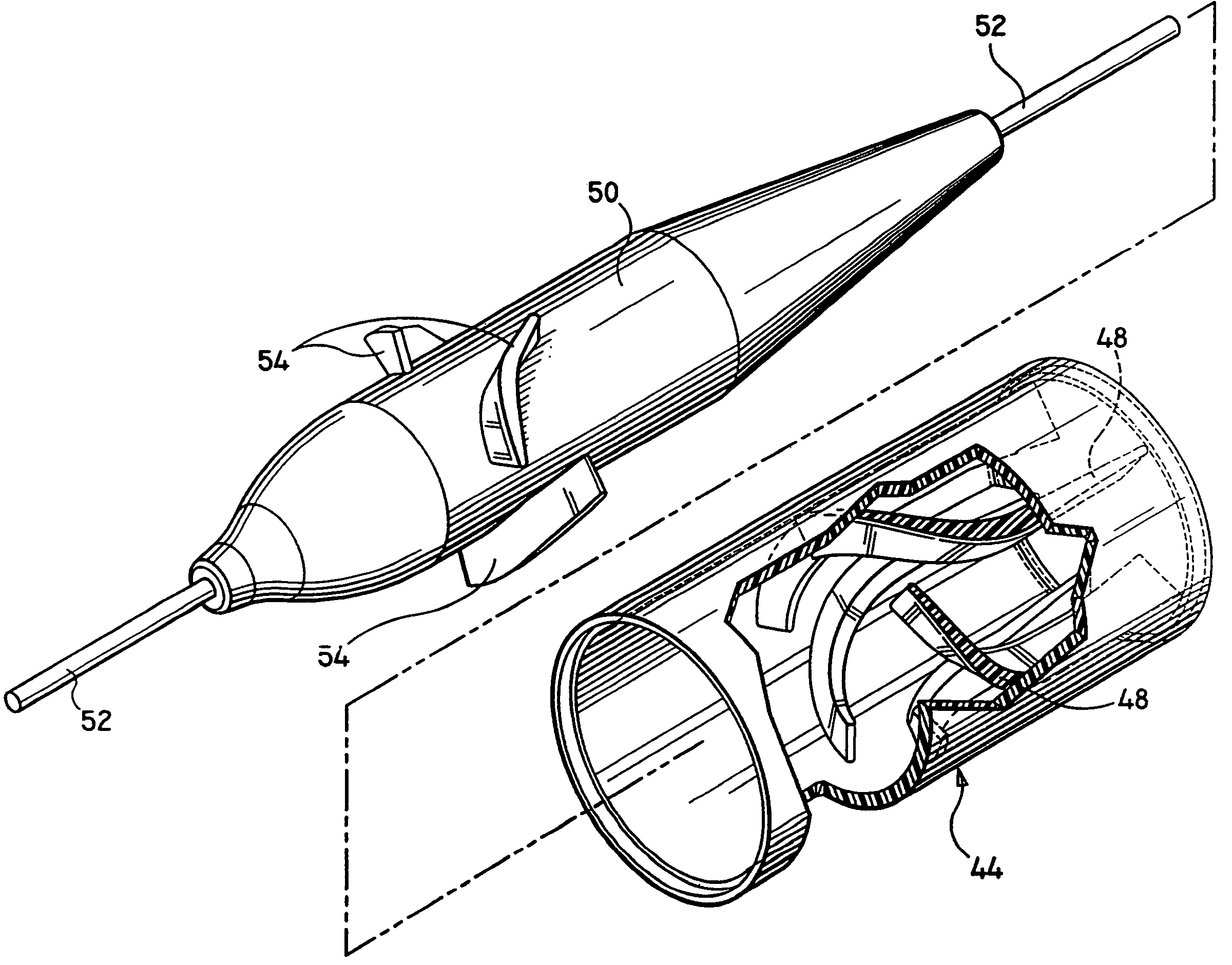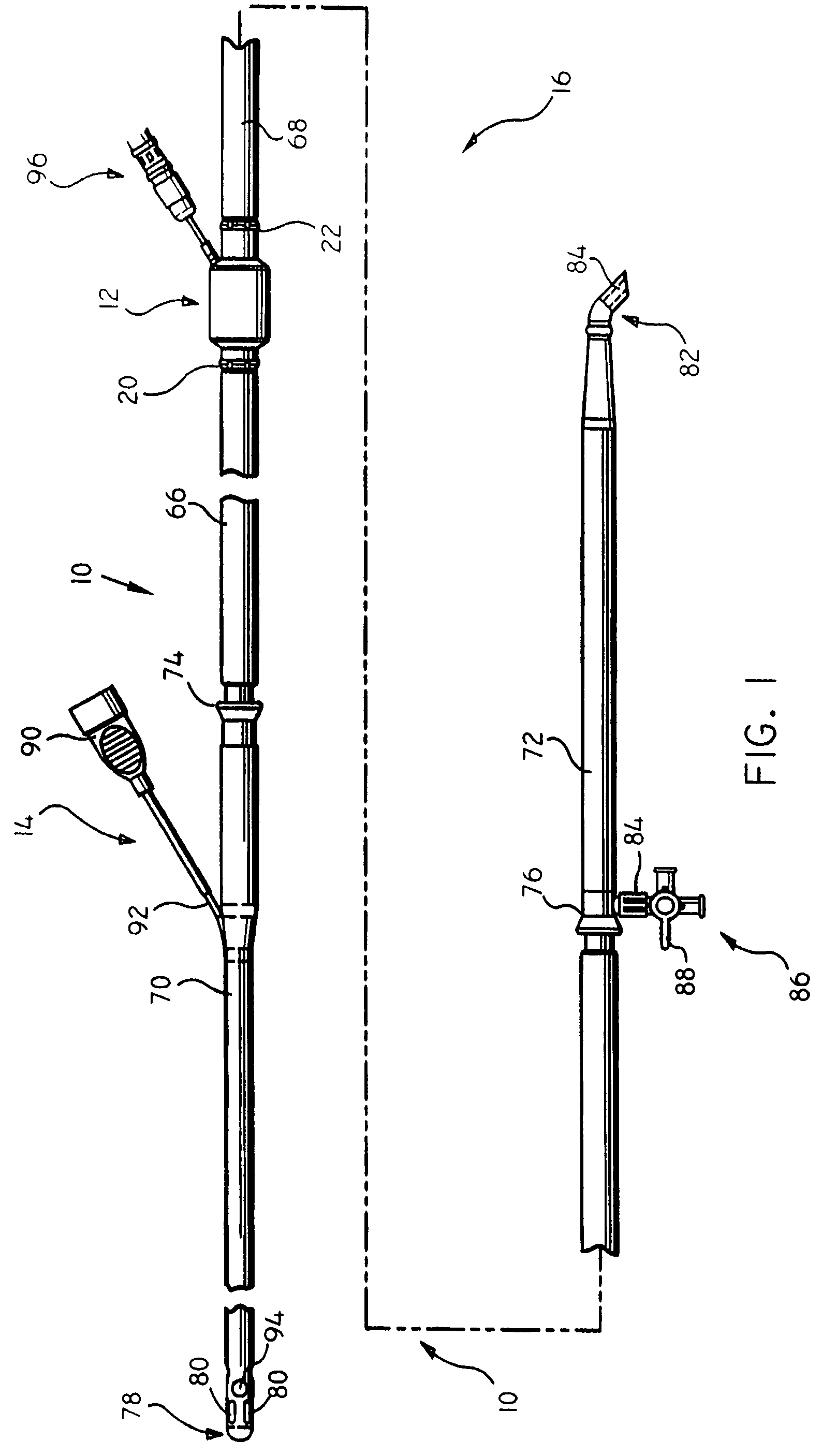Circulatory support system
a support system and circulatory tube technology, applied in the direction of heart stimulators, prostheses, therapy, etc., can solve the problems of reducing the usefulness of conventional bypass systems, requiring considerable set up time and continual management, and reducing the use of conventional bypass systems. , to achieve the effect of facilitating the pumping function of the right side of the hear
- Summary
- Abstract
- Description
- Claims
- Application Information
AI Technical Summary
Benefits of technology
Problems solved by technology
Method used
Image
Examples
Embodiment Construction
[0043]Referring now in detail to the drawings where like reference numerals identify similar or like components throughout the several views, FIG. 1 illustrates a preferred embodiment of the circulatory support system in accordance with the principles of the present disclosure. Particular features of support system 10 are also disclosed in U.S. Provisional Application Nos. 60 / 028,070, 60 / 026,656 and 60 / 026,657, each filed Oct. 4, 1996, and each entitled CIRCULATORY SUPPORT SYSTEM, the contents of each being incorporated herein by reference.
[0044]Circulatory support or bypass system 10 is contemplated to supplement or totally replace the pumping function of the heart during cardiac surgery and / or during temporary periods of heart failure. The system 10 can also be used during medical emergencies such as trauma, heart attack or heart failure. Circulatory support system 10 is particularly contemplated for patients in need of partial bypass of the left side of the heart while oxygenatio...
PUM
 Login to View More
Login to View More Abstract
Description
Claims
Application Information
 Login to View More
Login to View More - R&D
- Intellectual Property
- Life Sciences
- Materials
- Tech Scout
- Unparalleled Data Quality
- Higher Quality Content
- 60% Fewer Hallucinations
Browse by: Latest US Patents, China's latest patents, Technical Efficacy Thesaurus, Application Domain, Technology Topic, Popular Technical Reports.
© 2025 PatSnap. All rights reserved.Legal|Privacy policy|Modern Slavery Act Transparency Statement|Sitemap|About US| Contact US: help@patsnap.com



